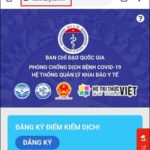The 5th of the 5th day of the lunar calendar is when the Worm-Killing Festival is held annually. This is an ancient traditional holiday in East Asian countries, and Vietnam is one of the nations that has preserved this beautiful tradition for the longest time. While the holiday holds different meanings in each country, for Vietnamese people, the Worm-Killing Festival, or Tết Đoan Ngọ, is a day for killing worms and worshipping ancestors.

This belief stems from the idea that this is a transitional period between seasons, a time when epidemics are prone to break out. On this day, according to ancient customs, farmers would perform rituals to ensure their crops and trees are safe from pests and diseases. Over the years, these practices have become traditions, and Tết Đoan Ngọ is now a well-loved traditional holiday for Vietnamese people. Various fascinating customs are observed during this festival. If you’re unfamiliar with these traditions, let’s explore them together!
Reference: The most up-to-date information for 2024
1 Beating the Tree at Noon
 Beating the Tree Ritual
Beating the Tree Ritual
On the day of Tết Đoan Ngọ, at exactly 12 noon, many localities perform a tree-beating ritual, also known as “đánh cây.” According to ancient beliefs, performing this ritual while wishing for abundance and prosperity will make those wishes come true.
During the tree-beating ritual, people choose fruit trees that bear little fruit or are infested with insects. The ritual involves two people. One person climbs the tree and embodies the spirit of the tree. The other person stays on the ground, holding a knife, and knocks on the tree’s trunk while asking questions such as, “Why aren’t the trees bearing flowers and fruits this year?” and “Will there be more fruits next season?”… The person on the tree answers the questions from below. The questioner continues with their inquiries and threatens to cut down the tree if the situation doesn’t improve the following season. The person on the tree must answer quickly, in a panicked tone, and promise to bear more fruit the next year.
For further information:
2 Eating Fruits
 Eating Fruits
Eating Fruits
On this day, Vietnamese people usually eat sour fruits such as plums, mangoes, oranges, and pomelos, believing that it will help eliminate diseases. Additionally, eating these early-season fruits symbolizes their wish for a prosperous life, with trees bearing abundant flowers and fruits.
3 Eating Fermented Sticky Rice
 Eating Fermented Sticky Rice
Eating Fermented Sticky Rice
Fermented sticky rice is made by cooking sticky rice with yeast and alcohol. This sweet dish is believed to cure various ailments, including physical weakness, excessive thirst, and night sweats. On Tết Đoan Ngọ, family members often gather after a thorough personal cleaning and enjoy this delicious and healthy treat together. This long-standing custom symbolizes their wish to ward off diseases and bring good health and vitality.
Reference:
4 Picking Medicinal Herbs
 Picking Medicinal Herbs
Picking Medicinal Herbs
In many localities, especially in rural areas, people often go together to pick medicinal herbs at noon on this day. According to tradition, this is the time when the yang energy is at its peak, and the sun emits the best rays of the year. People usually go in groups and collect herbs that can cure skin and gastrointestinal diseases. After picking the herbs, they boil the water for bathing or steam inhalation to prevent or treat illnesses.
5 Eating Bánh Ú Tro (Sticky Rice Dumplings)
 Eating Bánh Ú Tro
Eating Bánh Ú Tro
Bánh ú tro, or sticky rice dumplings, are a signature dish of Tết Đoan Ngọ and cannot be missed during this festival. To make delicious bánh ú tro, one must be meticulous in choosing the ingredients. The sticky rice must be fragrant and glutinous and soaked in lye water, and the dumplings must be wrapped in dong leaves instead of banana leaves… The dumplings are then wrapped into bundles, usually containing 7-10 dumplings, and boiled together. During this holiday, parents and grandparents often make a large batch of these dumplings so that when their children and grandchildren visit, the family can enjoy them together, along with cool drinks, and spend quality time chatting.
6 Eating Duck Meat
 Eating Duck Meat
Eating Duck Meat
Consuming duck meat is also a custom during Tết Đoan Ngọ. According to Eastern medicine, duck meat has a cooling effect and is excellent for heat dissipation, so on this hot festival day, Vietnamese people often eat duck meat to nourish and cleanse their bodies.
In addition to these prominent customs, on Tết Đoan Ngọ, in many localities, parents paint their children’s fingernails and toenails red or apply lime to their chests and navels to prevent headaches and chest pain. If they can’t go herb picking, people will still take the time to buy cooling and medicinal leaves to store at home for this occasion. This is not just a habit but a beautiful tradition and cultural practice that Vietnamese people uphold and cherish.
Reference:
We hope that through this article, you have gained some insight into Vietnam’s Tết Đoan Ngọ. Share this fascinating information with your family and friends so they, too, can understand the significance of this holiday. Don’t forget to send your loved ones warm greetings and best wishes on this special occasion.
Explore 12 Amazing Destinations for Biking Trips
Unlock Vietnam in a brand new way with an exciting biking tour! Discover the stunning beauty of the country with Dien May XANH’s top 12 must-see destinations. From sweeping plains to clear blue beaches and mountainous vistas – experience all the sights with your own personal cycling tour. Find your ideal route and set out for an adventure today!



































